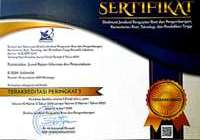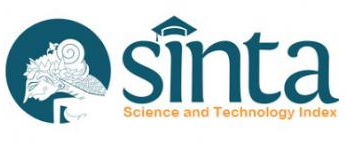Distinction of Millennials and Generation Z Islamic Literacy: A Comparative Study of Reading Preferences at UIN Sayyid Ali Rahmatullah Tulungagung
DOI:
https://doi.org/10.21154/pustakaloka.v15i1.5905Keywords:
Islamic literacy, Millennial, Gen ZAbstract
Abstract: The characteristics of the generation are related to the side of Islamic behavior that they should adhere to. We can analyze the selection of literacy commonly used in studying Islam. However, the challenge is increasing the prevalence of various literacy that does not introduce tolerance and diversity, even leading to radicalism. Therefore, mapping the relationship between generation categories and literacy selection is used, especially in the Higher Education environment, considering its role as a center for knowledge development. Through the mixed method, this study tries to compare the use of literacy between 2 different generations, namely Millennial and Z, at UIN Sayyid Ali Rahmatullah. The results of this study show that first, Millennials tend to use gadgets to obtain Islamic knowledge compared to Generation Z, who prefer to learn Islam face-to-face or in person. Second, Gen Z finds less radical content than millennials, who show how their interest in the issue of radicalism is lower as a form of their apathy on the issue. Third, Gen Z is more acknowledging that they know what kind of Islamic content to avoid than Gen Y, but this is just a matter of the general meaning of their version of radicalism rather than specific to characters, books, or other sources that should be avoided.
Keywords: Gen Z , Islamic literacy, Millennial
Abstrak: Karakteristik generasi berhubungan dengan sisi perilaku keislaman yang seharusnya mereka anut. Hal itu bisa kita analisis pemilihan literasi yang biasa dipakai dalam mempelajari Islam. Namun demikian, tantangan saat ini mengarah pada makin maraknya berbagai literasi yang tidak memperkenalkan toleransi dan keberagaman bahkan mengarah pada radikal. Oleh karena itu, pemetaan hubungan antara kategori generasi dengan pemilihan literasi yang dipakai terutama di lingkungan Perguruan Tinggi, perlu dilakukan mengingat perannya sebagai pusat berkembangan pengetahuan. Melalui metode mix method, penelitian ini mencoba untuk membandingkan penggunaan literasi yang digunakan antara 2 generasi yang berbeda yaitu Millenial dan Z, di UIN Sayyid Ali Rahmatullah sebagai salah satu PTKIN terbesar di Indonesia. Hasil dari penelitian ini menunjukkan yaitu pertama, milenial memang cenderung suka menggunakan gadget dalam memperoleh pengetahuan keislaman dibanding generasi Z yang lebih menyukai belajar islam via tatap muka atau langsung. Kedua, Gen Z lebih jarang menemukan konten yang berbau radikal dibanding milenial dimana menunjukkan bagaimana ketertarikan mereka terhadap isu radikalisme lebih rendah sebagai wujud apatisme mereka pada isu tersebut. Ketiga, Gen Z lebih mengakui bahwa mereka tahu konten keislaman seperti apa yang harus dihindari dibanding Gen Y, akan tetapi hal ini hanya sekedar secara umum arti radikal versi mereka bukan spesifik pada tokoh, buku ataupun sumber lainnya yang seharusnya dihindari.
Kata Kunci: Gen Z, Literasi keislaman, Milenial,
References
Bencsik, A., Csikos, G., & Juhaz, T. (2016). Y and Z Generations at Workplaces. Journalof Competitiveness, 8(3), 90”“106.
Creswell, J.W. & Plano Clark, V.L. (2011). Designing and Conducting Mixed Methods Research. (2nd ed.). Thousand Oaks, CA: Sage Publications, Inc.
______. (2015). Research Design, Pendekatan Kualitatif, Kuantitatif, dan Mixed Method, Pustaka Pelajar, Yogyakarta.
Dencker, J. C., Joshi, A., & Martocchio, J. J. (2008). Towards a theoretical framework linking generational memories to workplace attitudes and behaviors. Human Resource Management Review, 18(3), 180”“187.
Hadi, Sutrisno (1981). Metodologi Research, Yogyakarta: Andi Offset.
Hasan, Nurhadi ed. (2018) Literatur Keislaman Generasi Milenial: Transmisi, Apropriasi, dan Kontestas. Yogyakarta: Pascasarjana UIN Sunan Kalijaga Press
Howe, N., & Strauss, W. (1991). Generations: the history of America’s future, 1584 to2069.
Howe, N., & Strauss, W. (2000). Millennials rising: The next greageneration. New York: Vintage.
Jurkiewicz, C. L. (2000). Generation X and the Public Employee. Public Personnel Management, 29(1), 55.
Lancaster, L. C. and Stillman, D. (2002). When Generations Collide. Who They Are. Why They Clash. How to Solve theGenerational Puzzle at Work. New York: Collins Business.*
Mannheim, Karl (1952) the problem of generation dalam Paul Kecskemeti Essay on Sociology of knowledge: Collected Work. New York: Routledge.
Mantra, Ida Bagoes (2004) Filsafat Penelitian dan Metode Penelitian Sosial. (Yogyakarta: Pustaka Pelajar.
Matthew B. Miles, dan A. Michael Huberman, (1992) Analisis Data Kualitatif, Bandung: PT. Remaja Rosdakarya.
Putra, Yanuar Surya. (2016). Theoritical Review: Teori Perbedaan Generasi. Among Makarti Vol.9 No.18, Desember 2016.
Ryder, N. B. (1965). The Cohort as a Concept in the Study of Social Change. American Sociological Review, 30(6), 843”“861. https://doi.org/10.2307/2090964
Said, Ali. Indah Budiati. Tria Rosalina Budi Rahayu. Anugrah Pambudi Raharjo. (2018). Statistik Gender Tematik: Profil Generasi Milenial Indonesia. Jakarta: Kementerian Perberdayaan Perempuan dan Perlindungan Anak.
Strauss, W., & Howe, N. (1991). Generations: The history of America’s future, 1584 to 2069. New York: William Morrow & Co.
Sugiyono. (2013). Metode Penelitian Kombinasi (Mixed Methode), Alfabeta, Bandung.
Twenge, J. M. (2006). Generation Me: Why Today’s Young Americans Are More Confident, Assertive, Entitled and More Miserable Than Ever Before. New York: Free Press.
Downloads
Published
Issue
Section
License
Requirements to be met by the author as follows:
- Author storing copyright and grant the journal right of first publication manuscripts simultaneously with licensed under the Creative Commons Attribution License that allows others to share the work with a statement of the work's authorship and initial publication in this journal.
Authors can enter into the preparation of additional contractual separately for non-exclusive distribution of a rich version of the journal issue (eg: post it to an institutional repository or publish it in a book), with the recognition of initial publication in this journal.
Authors are allowed and encouraged to post their work online (eg, in institutional repositories or on their website) prior to and during the submission process, because it can lead to productive exchanges, as well as citations earlier and more severe than published works. (see The Effect of Open Access).















